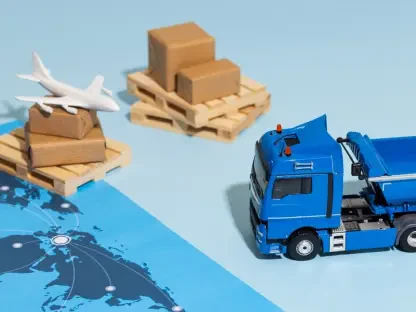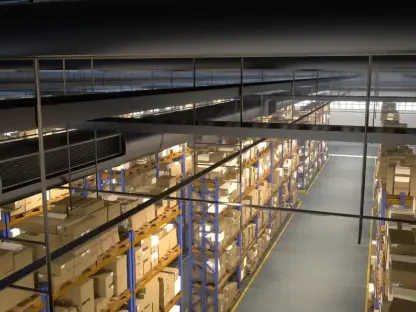The recent implementation of Russian Directive No. 1374 on October 15, 2024, has resulted in significant disruptions in China-Europe rail logistics. This directive broadens the list of banned transit goods, particularly targeting items with potential civilian and military uses, such as machinery, electronics, and camouflage clothing. Consequently, Russian customs have been detaining containers suspected of carrying such goods, leading to significant delays and operational challenges for freight forwarders.
Increased Customs Inspections
Detentions Along Rail Routes
Russian Directive No. 1374 has empowered customs officials to hold shipments and conduct thorough inspections at any point along the rail route, including entry points as well as deeper within Russian territory. This shift in process has resulted in numerous containers being detained well past the initial border checks, significantly scaling up the scope and severity of disruptions. Containers already deemed clear at the border have been stopped in transit, with customs officials focusing on goods identified by specific codes, particularly those beginning with 84. As a result, entire railcars have been detained if even one container on them is flagged for inspection, causing massive holdups.
The directive’s broad inspection mandate means that the detection of even one suspicious container leads to the detention of both 40-foot containers sharing a railcar. This has impacted an enormous number of consignments, with over 1,000 containers affected so far. Companies have reported significant operational challenges, with some noting that up to 100 of their containers are currently held by Russian customs. The affected shipments need detailed documentation provided to customs, which further delays the process as the documents may either be returned, confiscated, or ultimately allowed to proceed after detailed examinations. These inspections and consequent detentions have led to a slowdown in operations and increased congestion at various critical transit points.
Russia’s Impact on China-Europe Railway Express
China-Europe Railway Express operations have been particularly hard hit by these widespread detentions. This rail line necessitates a change in rail gauge at the Chinese-Russian border, wherein containers are transferred to new railcars. With Russia employing a unique practice where two 40-foot containers share one railcar, customs inspections flagging one container results in the detention of both containers. This practice has resulted in severe slowdowns, with significant numbers of containers stuck in transit awaiting clearance. Communication delays and logistical congestion at transit hubs such as Smolensk near the Belarusian border have added to the problem, leading to an unprecedented bottleneck.
The congestion and delay have had stark consequences on the operational efficiency and reliability of the China-Europe Railway Express. Official data from November 2024 reveals a 2% decrease in train operations compared to the same period the previous year. Additionally, the number of container shipments has plummeted to 165,400 20-foot units, marking a year-on-year decline of 3.2% and a month-on-month drop of 4.1%. These statistics highlight the substantial impact of the expanded Russian customs checks as operational slowdowns and increased costs force shippers to reconsider their transport options.
Alternative Routes and Strategies
Rerouting and Increased Costs
Amid the chaos and significant delays at key transit points, logistics companies have been forced to seek alternative routes to maintain some level of operational efficiency. Firms like Bangdatong Logistics have rerouted containers through Kazakhstan, Turkey, or by sea to mitigate the delays caused by Russian Directive No. 1374. Despite finding alternative paths, these options have proven to be substantially more costly. The financial impact of these disruptions has been severe, with associated rerouting costs soaring between $5,000 and over $10,000 per detained container. These added expenditures have made shippers hesitant to rely on the China-Europe Railway Express, further slowing down its operations.
Additionally, the alternatives, though necessary, come with their own sets of challenges. Reroute paths like those through Kazakhstan or Turkey can face geopolitical tensions, infrastructural limitations, or exposure to similar customs inspection procedures. Sea routes, while reliable to some extent, incur additional transit times and costs. These options also depend heavily on available sea freight capacities, which may be limited. Despite these challenges, rerouting has become an essential strategy to ensure the continual flow of goods amidst the obstacles presented by Russian customs checks.
Seasonal Challenges and Shipper Hesitation
The Russian Directive No. 1374, implemented on October 15, 2024, has caused major disruptions in rail logistics between China and Europe. This new directive expands the list of prohibited transit goods, with a particular focus on items that could serve both civilian and military purposes. This includes machinery, electronics, and camouflage clothing. As a result of the directive, Russian customs officials have been detaining containers suspected of carrying these restricted items. This has led to substantial delays and operational difficulties for freight forwarders working along this crucial trade route. The detentions have also resulted in a backlog of goods at various customs checkpoints, further complicating the logistics and timely delivery of products. Businesses relying on this rail link are facing increased costs and uncertainties, putting additional pressure on the supply chain and international trade relations. The directive illustrates the complex geopolitical landscape and its impact on global commerce, causing traders to seek alternative routes and solutions to mitigate these logistical challenges.









